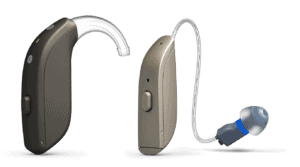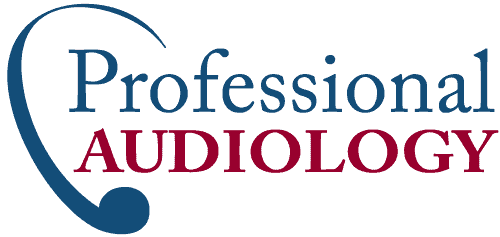Hearing Health & Hearing Loss
Our sense of hearing does all of this naturally through a sophisticated process we never even really think about unless we begin to notice that words in conversation aren’t as clear, or the sound of the raindrops is so faint we barely notice it.
“Huh?” becomes a regularly repeated word, and when you’re tired of repeating it, you may simply just nod and smile, not really knowing at all what was said.
When you experience a loss in hearing clarity, it can be for various reasons. While the most common is sensorineural hearing loss, people also experience conductive hearing loss.
- Sensorineural Hearing Loss
- Conductive Hearing Loss
- Congenital Hearing Loss in Children
- Hearing Loss Solutions
- Hearing Loss Prevention
Sensorineural Hearing Loss
Your outer ear, middle ear, inner ear and brain all play a part in the complex process that results in the sounds that you hear. Deep within your middle ear is a coil-shaped canal called the cochlea (kok-lee-uh). Tiny hairs within the cochlea play a delicate and critical role in your hearing clarity. Put simply, their response to sound waves creates nerve signals, which are transmitted by nerve fibers to your brain. Your brain then interprets those nerve signals as sound.
Over time, i.e., with age, these tiny hairs and nerve fibers can become damaged or die. The hair cells do not regenerate, so as the number of functioning hairs decreases, hearing clarity decreases. The resulting hearing loss is irreversible but can be helped with properly prescribed hearing aids and assistive listening devices.
The two most common types of sensorineural hearing loss:
- Presbycusis – Age-Related Hearing Loss and
- Noise-Induced Hearing Loss.
Congenital hearing loss in children can also result in sensorineural hearing loss.
Presbycusis – Age-Related Hearing Loss
Presbycusis (prĕz’bĭ-kyū’sĭs), also known as age-related hearing loss, is the cumulative effect of aging on hearing. It is a gradual loss that happens over time – so gradual in fact that people with presbycusis may not realize that their hearing is diminishing. Signs of this loss include:
- Difficulty hearing high-frequency sounds like speech.
- Challenges in understanding conversations in noisy settings
- Even in quiet settings people’s voices sound mumbled or slurred.
Age-related hearing loss is very common: affecting 1/3 of people between 65 and 75 years and up to 1/2 of people 75 and over.
While environmental exposure to noise (such as power tools, loud music — see Noise-Induced Hearing Loss below) contributes to presbycusis, up to half of presbycusis is genetically determined.
Although presbycusis actually begins its affect on hearing in one’s early 20’s, it is not until people are in their 40’s and 50’s that they start to notice a change in their hearing.
Noise Induced Hearing Loss
Essentially, noise-induced hearing loss occurs when hearing is damaged over time by exposure to loud noise without proper hearing protection. Loud music, power tools, construction noise, lawnmowers, firearms, and recreation noise, e.g., motorcycles and speedboats, all take their toll on your hearing clarity—words aren’t clear or music doesn’t sound as nice as it used to because you’re now missing the full frequency or range of sound.
Another type of hearing impairment is conductive hearing loss. This is a result of sound not being efficiently conducted through the outer ear (ear canal and eardrum) and/or middle ears (the tiny bones of the middle ear). With conductive hearing loss, the sounds you hear seem reduced in volume or “muffled” as though you are wearing earplugs.
The most common causes of conductive hearing loss include impacted earwax (cerumen), the presence of a foreign body in the ear, or fluid in the ear associated with colds, allergies, ear infections (e.g., otitis media, which is more common with infants and children than with adults). A poorly functioning Eustachian tube or malformation of certain parts of the ear are also examples of physical conditions that can cause conductive hearing loss.
Conductive hearing loss can often be corrected through medicine or with surgery, and amplification from hearing aids can also be of benefit. Many patients are astonished to discover that their hearing loss is attributed to something as simple as impacted earwax, which can be removed by your doctor or audiologist at the time of your appointment.
Congenital Hearing Loss in Children
Congenital hearing loss is present in infants at birth. Over half of all instances of congenital hearing loss are thought to be the result of genetic factors, where one or both parents have either dominant or recessive traits for hearing loss and pass it on to the child. Other causes of congenital hearing loss include infections, illnesses, or complications either prenatally, at the time of birth or shortly after birth. These conditions typically cause sensorineural hearing loss ranging in degree from mild to profound.
The Process of Hearing Loss
It Often Happens Over Time
Hearing loss typically happens over a long period of time, so the decline in your hearing clarity is gradual and may even seem unnoticeable. It is a slow process, and your ears and brain work together to adjust to the loss in clarity. If you wear glasses or contact lenses to correct your vision, you may remember the first time you put on your new glasses and were able to distinctly see the outlines of leaves on a tree or the crisp, clean letters in the newspaper versus shades of green you knew to be leaves and shades of gray and black that you squinted at to bring into focus. You probably thought, “Wow! I didn’t realize just how much I couldn’t see!” Most of our patients who have a loss in hearing clarity and decide to try hearing aids experience the same revelation with their hearing.
**Hearing loss can also be progressive, happening gradually over time, or sudden, as though someone flipped a switch and adjusted the sound volume. It’s IMPORTANT that you visit your family doctor if you are experiencing ear pain, bleeding from the ears, sudden hearing loss, or fluctuations in hearing, because these symptoms may be the result of a problem that needs medical treatment.
It Can Be Different in Each Ear
You can experience hearing loss in one ear or both ears. When both ears are affected, the degree and type of loss can be different in each ear. Hearing loss can be consistent or it can fluctuate; when hearing clarity fluctuates, it is typically the result of an ear infection or fluid in the inner ear.
You’re Not Alone
If you feel that you aren’t hearing things as clearly as you used to, you’re not alone. Millions of people of all ages have some form of hearing loss that ranges from mild to severe. In fact, many doctors recommend that a hearing test be part of a routine physical exam. If you haven’t had your hearing evaluated, give us a call to schedule a comprehensive hearing test. It’s easy, painless and even covered by most health insurance. Your hearing will be glad you did.
Solutions for Hearing Loss
When you visit Professional Audiology, we discuss your hearing concerns. In addition to addressing hearing loss and related solutions, we will assess if your hearing concerns are something for which you must see your family doctor (e.g., ear pain, bleeding from the ears, fluctuating hearing loss, sudden hearing loss).
We then begin to perform a hearing evaluation and typically discover one of three things:
- You have earwax blocking your ear canal – once it’s removed, your hearing is greatly improved!
- Your ears look fine, and your hearing test results show that you are hearing clearly. Today’s test will then serve as a baseline for future hearing evaluations.
- Your ears look fine, but your hearing test reveals that you do have a hearing loss.
If your hearing test shows that you have a hearing loss, we will work with you to recommend the best solutions to help you hear more clearly. This can range from assistive listening devices, e.g., amplified telephones, to hearing instruments or both.
Can hearing loss be cured? Unfortunately, there is no way to reverse noise induced hearing loss, but there are solutions to help you hear more clearly. Contact us today for your no-obligation appointment.
Sensorineural Hearing Loss
Your outer ear, middle ear, inner ear and brain all play a part in the complex process that results in the sounds that you hear. Deep within your middle ear is a coil-shaped canal called the cochlea (kok-lee-uh). Tiny hairs within the cochlea play a delicate and critical role in your hearing clarity. Put simply, their response to sound waves creates nerve signals, which are transmitted by nerve fibers to your brain. Your brain then interprets those nerve signals as sound.
Over time, i.e., with age, these tiny hairs and nerve fibers can become damaged or die. The hair cells do not regenerate, so as the number of functioning hairs decreases, hearing clarity decreases. The resulting hearing loss is irreversible but can be helped with properly prescribed hearing aids and assistive listening devices.
The two most common types of sensorineural hearing loss:
- Presbycusis – Age-Related Hearing Loss and
- Noise-Induced Hearing Loss.
Congenital hearing loss in children can also result in sensorineural hearing loss.
Presbycusis – Age-Related Hearing Loss
Presbycusis (prĕz’bĭ-kyū’sĭs), also known as age-related hearing loss, is the cumulative effect of aging on hearing. It is a gradual loss that happens over time – so gradual in fact that people with presbycusis may not realize that their hearing is diminishing. Signs of this loss include:
- Difficulty hearing high-frequency sounds like speech.
- Challenges in understanding conversations in noisy settings
- Even in quiet settings people’s voices sound mumbled or slurred.
Age-related hearing loss is very common: affecting 1/3 of people between 65 and 75 years and up to 1/2 of people 75 and over.
While environmental exposure to noise (such as power tools, loud music — see Noise-Induced Hearing Loss below) contributes to presbycusis, up to half of presbycusis is genetically determined.
Although presbycusis actually begins its affect on hearing in one’s early 20’s, it is not until people are in their 40’s and 50’s that they start to notice a change in their hearing.
Noise Induced Hearing Loss
Essentially, noise-induced hearing loss occurs when hearing is damaged over time by exposure to loud noise without proper hearing protection. Loud music, power tools, construction noise, lawnmowers, firearms, and recreation noise, e.g., motorcycles and speedboats, all take their toll on your hearing clarity—words aren’t clear or music doesn’t sound as nice as it used to because you’re now missing the full frequency or range of sound.
Our Hearing Health Care Services
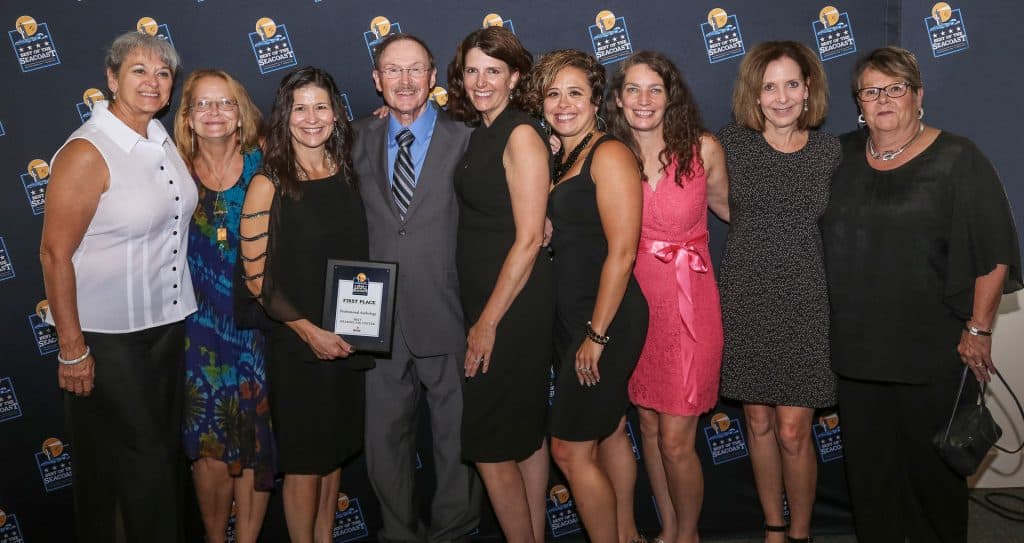


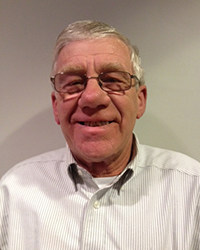

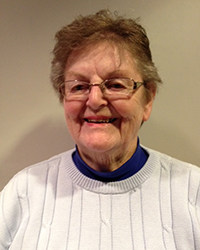
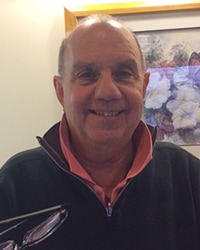
We’re Here to Help
Our hearing aid center professional Audiology is the longest-running, family-owned practice in New Hampshire.
Providing the Best Professional Audiological Services to Individuals in the Seacoast Area for Over 40 Years

